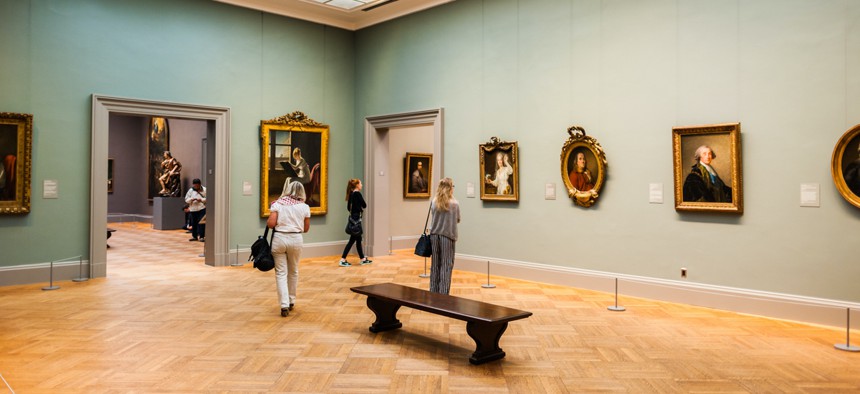Covid-19 Could Permanently Close Up to a Third of Museums

The Metropolitan Museum of Art in New York City plans to reopen to the public at the end of August, "pending state and city approval." Shutterstock
The devastating financial impact of the ongoing coronavirus pandemic is being felt at cultural institutions across the country, according to a survey of more than 750 museum directors.
Up to a third of American museums could close permanently as financial reserves run dry and funding sources continue to decrease during the ongoing coronavirus pandemic, according to a June survey of museum directors across the country.
“Museum revenue disappeared overnight when the pandemic closed all cultural institutions, and sadly, many will never recover,” said Laura Lott, president and CEO of the American Alliance of Museums, which surveyed 760 museum directors about the financial health of their organizations after months of closures. “Even with a partial reopening in the coming months, costs will outweigh revenue and there is no financial safety net for many museums.”
A third of survey respondents said either there was a “significant risk” that their museums would close permanently by next fall or that they “didn’t know” if they would survive the pandemic.
After being closed for months, 59% of museum directors said they had identified a target date for reopening, while 39% had no date in mind (the remaining 2% of museums had already opened at the time of the survey). More than 40% of museum leaders who say their institution plans to reopen also indicated they are moving forward with reduced staffing, while spending extra money to install Plexiglas barriers, hand-sanitizing stations and other public health measures deemed necessary to reopen safely.
But even the most cautious reopening plans are subject to change. At the end of June, the Perot Museum of Nature and Science and the Dallas Holocaust and Human Rights Museum—both in Dallas—announced jointly that they had decided to “pause” reopening plans for early July after Covid-19 cases spiked in the county. To date, the facilities have not unveiled a new reopening plan. Several museums in Los Angeles reopened their doors last month, but then shuttered several weeks later at the direction of Gov. Gavin Newsom after a surge of cases in the state.
Some museums in New York City were hoping to reopen this week, only to have New York Gov. Andrew Cuomo delay the resumption of “indoor activity” in malls, restaurants or cultural institutions. It was a proactive decision, Cuomo said, designed to guard against out-of-state visitors from places where coronavirus cases have continued to increase.
“We are still in a precarious position, not because of anything we have done, but because of the negligence of the federal government and the states that, frankly, listen to the federal government,” he said last week on a conference call with reporters. “I am very worried about the spread that we see across the country, and the inevitability that the spread will be here.”
In Chicago, where multiple museums are beginning to reopen with safety protocols in place, officials said they would be ready to reevaluate if local cases spiked or staff or patrons reported testing positive for Covid-19.
“Unfortunately, that’s part of the reality of right now,” John McKinnon, executive director of the Elmhurst Art Museum, told the Chicago Sun-Times.
As closures persist, museums continue to be at risk of running out of money. Nearly 90% of museums have 12 months or less of financial reserves remaining, and 56% have fewer than six months of funding left to cover operations. Many of those museums have continued to provide programming during the pandemic, such as online educational resources for parents, children and teachers, largely free of charge.
Administrators are hoping to bridge the funding gap by lobbying for government funding at every level, Lott said. But museums typically receive less than a quarter of their funding from government sources, with the rest coming from admission fees and public and private donors. That money is “crucial to saving the museum field,” she said.
Charitable donations have soared during the pandemic, partially thanks to a provision in the federal CARES Act that expanded the amount of cash contributions that could be deducted from taxes. It’s unclear whether museums in general have benefited from that trend, though at least one—the Virginia Museum of Contemporary Art—funded its reopening plan entirely through community donations.
The museum, which opened to the public July 11, requires visitors to register online for tickets, wear masks in the facility and adhere to social-distancing guidelines. Those tickets are free through January, the museum said, “thanks to a donation from a generous community sponsor.”
Kate Elizabeth Queram is a staff correspondent for Route Fifty and is based in Washington, D.C.
NEXT STORY: As Long Waits for Results Render Covid Tests ‘Useless,’ States Seek Workarounds





